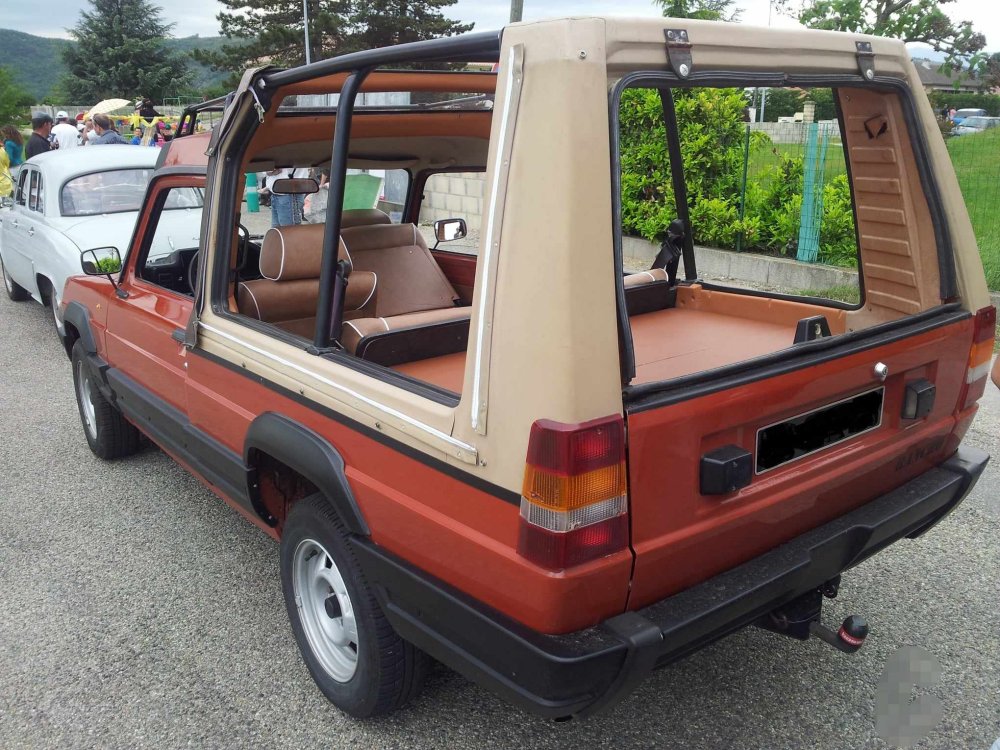Description
The Talbot-Matra Rancho Découvrable was one of the rarest and most distinctive versions of the Rancho lineup, created to offer an open-air, leisure-oriented variant of Matra’s pioneering crossover-style vehicle. While the standard Rancho already combined rugged styling with everyday practicality, the Découvrable took the concept in a more recreational direction by fitting a removable soft-top over the rear section of the body. This gave the model an appealing blend of open-roof freedom, estate-car versatility and the adventurous look that defined the Rancho series. Produced in very limited numbers, it is today one of the most unusual and desirable Rancho derivatives.
The Découvrable was based on the familiar Simca 1100 mechanical platform used across the Rancho family. It retained the transversely mounted 1,442 cc Simca four-cylinder engine and front-wheel-drive layout, delivering around 80 horsepower and a relaxed, flexible driving character. The mechanical simplicity of the drivetrain was part of the Rancho’s charm: it was easy to maintain, economical to run and designed for real-world “soft-roading” rather than hardcore off-road performance. With modest weight and a torquey engine, the Découvrable handled country tracks, campsites, gravel roads and muddy lanes with the same confidence as the regular Rancho.
The suspension remained unchanged from the standard model, using MacPherson struts at the front and trailing arms at the rear. Matra increased the ride height over the original Simca 1100 to give the Rancho family a more commanding stance and better ground clearance. This setup made the Découvrable comfortable and surprisingly stable on mixed surfaces, offering a relaxed touring feel rather than the stiffness associated with more serious off-road machines. Front disc brakes and rear drums provided reliable stopping power, appropriate for the vehicle’s weight and intended role.
The Découvrable’s main distinction lay in its bodywork. Matra kept the Rancho’s familiar steel front cabin structure but redesigned the rear section to incorporate a removable fabric roof. The forward portion of the vehicle remained the same as the standard model, with steel panels and the trademark raised roofline above the front seats. Behind the B-pillars, however, the Rancho’s characteristic fibreglass-reinforced composite rear body was adapted to include a soft-top mechanism. The side panels, large windows and tall tailgate remained, but the rigid roof over the load area was replaced with a folding vinyl canopy supported by a tubular frame. This created a semi-convertible leisure vehicle unusual for its time.
The open-air rear section gave the Découvrable a distinctive silhouette that combined utility with a sense of holiday freedom. With the fabric top folded back, the large rear compartment could be used for carrying bulky leisure equipment, transporting oversized cargo or simply giving passengers an airy, open-roof experience. It also enhanced the Rancho’s appeal in coastal regions and sunny climates, where the combination of practicality and open-roof motoring was particularly attractive.
Inside, the Découvrable shared its cabin layout with the standard version. The dashboard was simple and robust, reflecting its Simca origins, while the seating and trim materials were chosen for durability. The cabin was spacious, with generous headroom and excellent visibility thanks to the large windows and upright pillars. In Découvrable form, the interior felt brighter still, with the open rear compartment giving the car a more relaxed, recreational ambience. The load area remained one of the Rancho’s strongest points, and the soft-top configuration made it even more flexible.
On the road, the Découvrable behaved much like the standard Rancho. It was not quick, but it was steady, predictable and very easy to drive. The front-wheel-drive system gave it reassuring behaviour in poor weather, and the raised ride height smoothed out rough surfaces. The open-roof rear section introduced slightly more wind noise and a different airflow pattern, but the driving experience remained calm and comfortable at typical touring speeds. The car’s charm lay not in performance but in its versatility and the sense of outdoorsy lifestyle it projected.
Production of the Rancho Découvrable was limited, and surviving examples today are rare. It never achieved large sales figures, partly because the standard Rancho already appealed strongly to its target market and partly because the Découvrable’s specialised nature restricted its audience. Nonetheless, it remains one of the most charismatic and unusual variants in the Rancho family, offering a genuinely different take on the leisure-vehicle theme that Matra pioneered.
Today, the Talbot-Matra Rancho Découvrable is valued as a quirky, imaginative and charming piece of French automotive history. It captures a moment when Matra was exploring the boundaries between estate car, utility vehicle and recreational machine, years before crossovers and lifestyle SUVs became mainstream. With its combination of practicality, unconventional design and open-air appeal, the Découvrable stands as a reminder of Matra’s bold, original thinking and its unique ability to create vehicles that were both functional and delightfully different.


